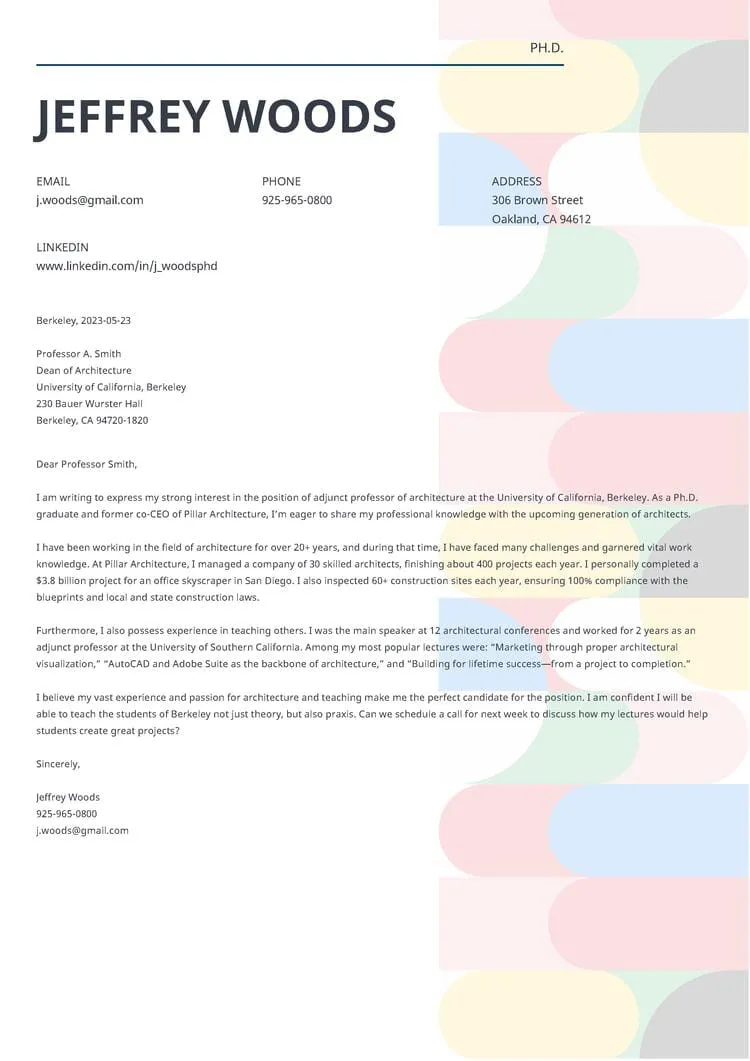Crafting a Compelling Adjunct Faculty Cover Letter
Securing an adjunct faculty position requires a cover letter that not only showcases your qualifications but also demonstrates your understanding of the role and the institution’s needs. A well-crafted cover letter is your first opportunity to make a positive impression, setting the stage for a successful application. It should be concise, focused, and tailored to the specific position and institution, effectively communicating your value and suitability for the role.
Understanding the Role of an Adjunct Faculty Member
Before you start writing, it’s crucial to understand what the role of an adjunct faculty member entails. Adjunct faculty often teach part-time, bringing real-world experience and specialized knowledge to the classroom. They may be responsible for course development, grading, and student advising. Demonstrating this understanding in your cover letter, by addressing how your skills align with the responsibilities, shows you’ve done your homework and are a good fit for the position.
Highlighting Relevant Skills and Experience
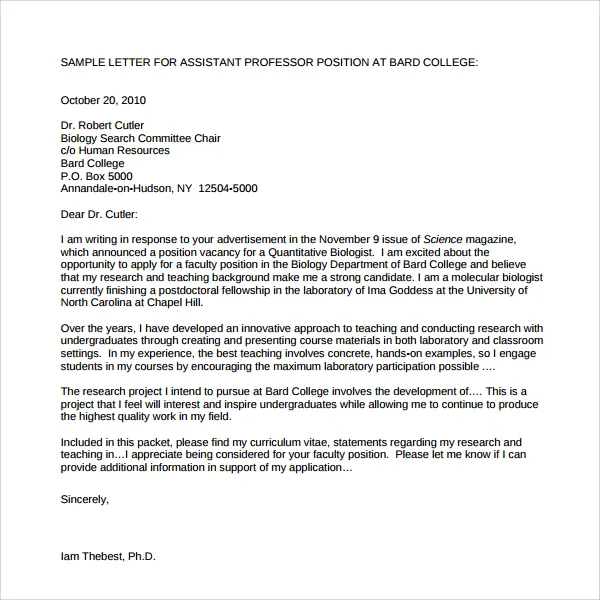
Your cover letter should clearly highlight the skills and experience most relevant to the position. Identify the key skills the institution is looking for in the job description and provide specific examples of how you have utilized these skills in your previous roles. Quantify your accomplishments whenever possible; for example, “Successfully developed and implemented a new curriculum that increased student engagement by 20%.” This shows you can deliver results and will be an asset to the institution. Think about transferable skills like communication, problem-solving, and leadership.
Showcasing Academic Qualifications
Detail your educational background, including the degrees you hold and the institutions from which you earned them. If you have any certifications or specialized training relevant to the position, be sure to include those as well. If you are currently pursuing a degree, mention the expected completion date. Make sure your credentials align with the expectations of the role. If you have publications or presentations, include them, as they add significant value to your application. This section should be easily scannable for the reader.
Tailoring Your Cover Letter to the Specific Position
Never send a generic cover letter. Customize each letter to the specific position and institution you are applying to. Review the job description carefully and address each requirement. If the job description emphasizes particular skills or experiences, make sure these are prominently featured in your cover letter. This level of customization demonstrates that you are genuinely interested in the role and have taken the time to understand the institution’s needs.
Researching the Institution and Department
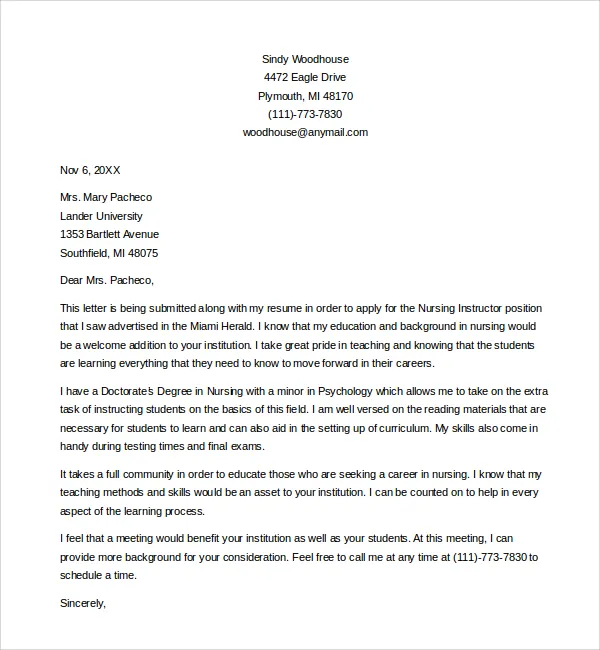
Before writing your cover letter, research the institution and the specific department. Understand their mission, values, and recent initiatives. If possible, identify the faculty members in the department and their areas of expertise. This information will help you tailor your letter and demonstrate your interest in the institution. Referencing specific programs, research projects, or faculty members can also make your cover letter more engaging and demonstrate your genuine interest.
Formatting Your Adjunct Faculty Cover Letter
The format of your cover letter is crucial for making a positive first impression. Use a professional font, such as Times New Roman or Arial, and maintain a consistent font size throughout. Keep the letter concise, ideally no more than one page. Use clear headings and bullet points to break up the text and make it easy to read. Proper formatting shows attention to detail and professionalism, which are essential qualities for an adjunct faculty member.
Structuring Your Cover Letter for Maximum Impact
Your cover letter should follow a clear structure. Start with a professional heading that includes your contact information and the date. Include the recipient’s name, title, and address. The body of the letter should consist of an introduction, several body paragraphs highlighting your skills and experience, and a conclusion. Each section should serve a specific purpose, contributing to the overall effectiveness of your application.
Writing a Strong Opening Paragraph
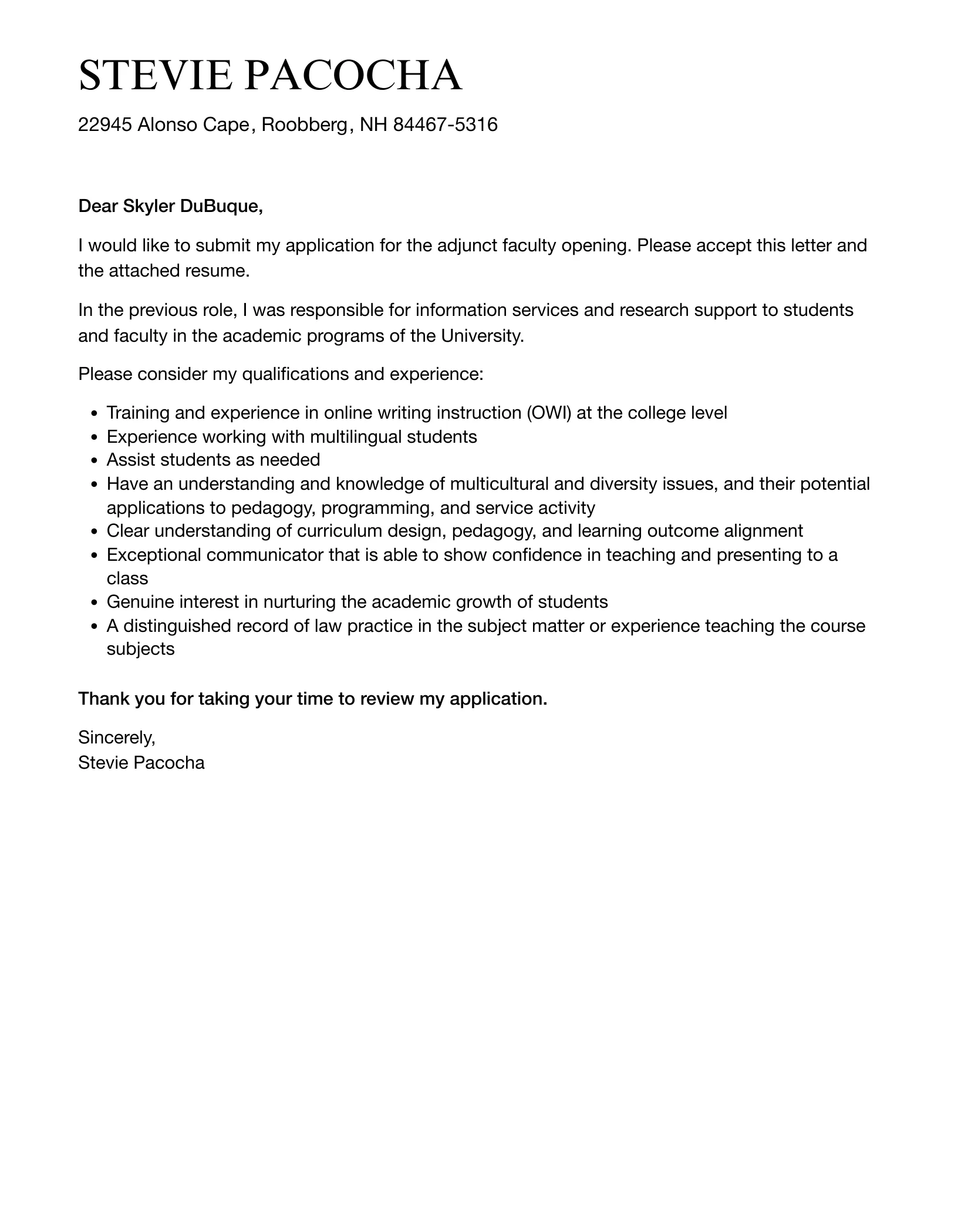
The opening paragraph is your chance to grab the reader’s attention. Clearly state the position you are applying for and where you saw the job posting. Briefly mention your most relevant qualifications and express your enthusiasm for the opportunity. This initial paragraph should set the tone for the rest of your cover letter, showcasing your interest and suitability for the role. It must be concise and compelling.
Detailing Your Teaching Philosophy and Approach
If the role requires teaching, be sure to articulate your teaching philosophy and approach. Explain how you engage students, create a positive learning environment, and adapt your teaching methods to meet diverse learning needs. Provide examples of how you have fostered student success in the past. Highlighting your teaching philosophy demonstrates your commitment to student learning and your understanding of effective pedagogical practices. Be specific and provide concrete examples.
Emphasizing Relevant Experience and Achievements
Use the body paragraphs to delve into your relevant experience and achievements. Provide specific examples of how you have successfully performed similar roles, developed curricula, managed projects, or achieved results. Use the STAR method (Situation, Task, Action, Result) to structure your responses and make your achievements clear and concise. Use action verbs to demonstrate your capabilities and make your accomplishments memorable.
Addressing the Specific Requirements in the Job Description
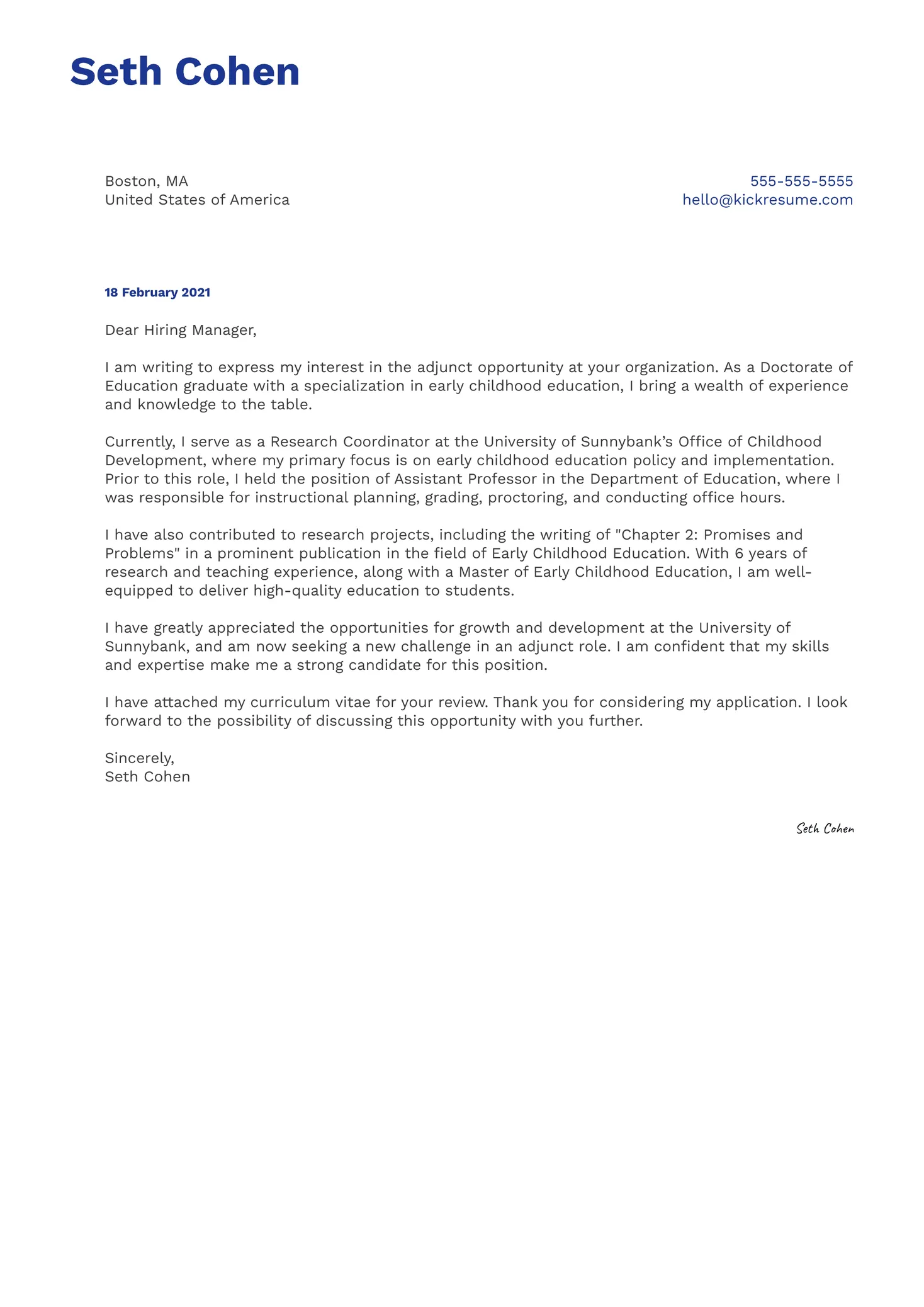
Carefully review the job description and address each requirement explicitly in your cover letter. Explain how your skills, experience, and qualifications align with the specific needs of the position. Don’t just list your qualifications; provide concrete examples of how you have met those requirements in the past. This shows the hiring committee you understand the role and are a good fit for the position.
Highlighting Your Relevant Skills
Identify the key skills that are most important for the adjunct faculty position. These might include teaching experience, curriculum development, communication skills, or subject-matter expertise. Provide specific examples of how you have demonstrated these skills in your previous roles. Use action verbs to describe your accomplishments and make your skills stand out. Tailor your skills to the specific requirements of the job.
Showcasing Your Achievements
Don’t just list your responsibilities; highlight your achievements. Quantify your accomplishments whenever possible, using metrics and data to demonstrate the impact you’ve made. For instance, did you improve student performance, increase student engagement, or develop a new program? Provide evidence of your contributions and the positive outcomes you achieved. Quantifiable achievements make a much stronger impact.
Writing a Powerful Closing Paragraph
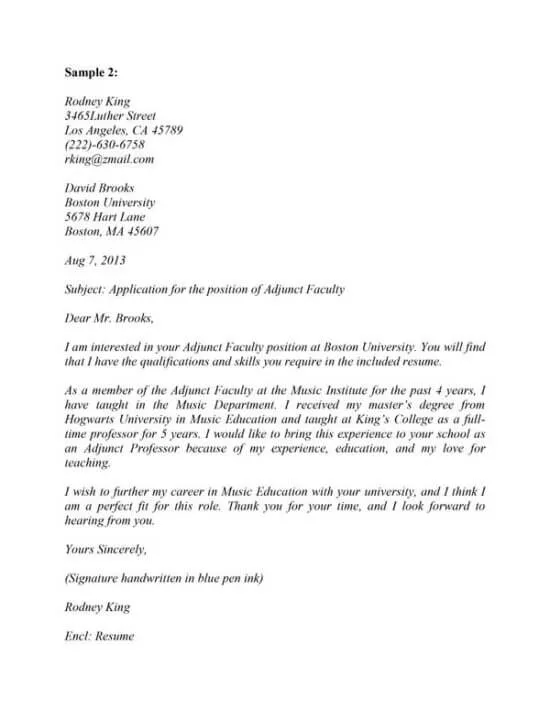
The closing paragraph should reiterate your interest in the position and express your gratitude for the opportunity. Reiterate your key qualifications and reiterate why you are a good fit. End by stating that you are available for an interview and provide your contact information. A strong closing paragraph leaves a lasting impression and reinforces your enthusiasm for the role.
Proofreading and Editing Your Cover Letter
Before submitting your cover letter, proofread it carefully for any errors in grammar, spelling, and punctuation. Errors can undermine your credibility and detract from your qualifications. Consider asking a friend or colleague to review your letter as well. Ensure that the tone is professional, the language is clear and concise, and the overall presentation is polished. A well-edited cover letter shows attention to detail and professionalism.
Using Action Verbs to Describe Your Accomplishments
Use action verbs to describe your accomplishments and make your cover letter more dynamic and engaging. Instead of saying “Responsible for teaching,” use verbs like “Developed,” “Implemented,” “Managed,” or “Led.” Action verbs bring your achievements to life and show the impact of your actions. Choose verbs that align with the specific requirements of the job description.
Incorporating Keywords from the Job Description
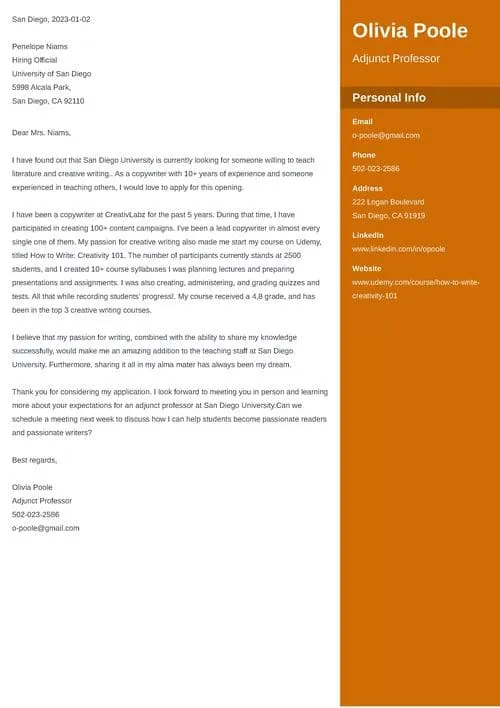
Identify the key keywords and phrases used in the job description and incorporate them into your cover letter. This can help your application get noticed by applicant tracking systems (ATS) and demonstrate that you meet the requirements of the position. However, use keywords naturally; don’t stuff your cover letter with keywords, as this can make it sound unnatural. The goal is to show that your skills and experience align with the needs of the role.
Avoiding Common Mistakes in Adjunct Cover Letters
Be aware of common mistakes, such as using generic language, failing to tailor your letter to the position, or including irrelevant information. Avoid typos and grammatical errors, as they can damage your credibility. Don’t simply rehash your resume; your cover letter should complement it. Make sure your letter is concise, focused, and demonstrates your understanding of the role and the institution’s needs. Make sure to not include salary expectations.
Demonstrating Your Enthusiasm and Commitment
Show your enthusiasm for the opportunity. Express your genuine interest in the position, the institution, and the department. Demonstrate your commitment to student success and academic excellence. Your passion for teaching and your enthusiasm for the role will make a strong impression on the hiring committee and increase your chances of getting hired. A cover letter that shows your excitement can set you apart from other applicants.
Following Up After Submitting Your Application
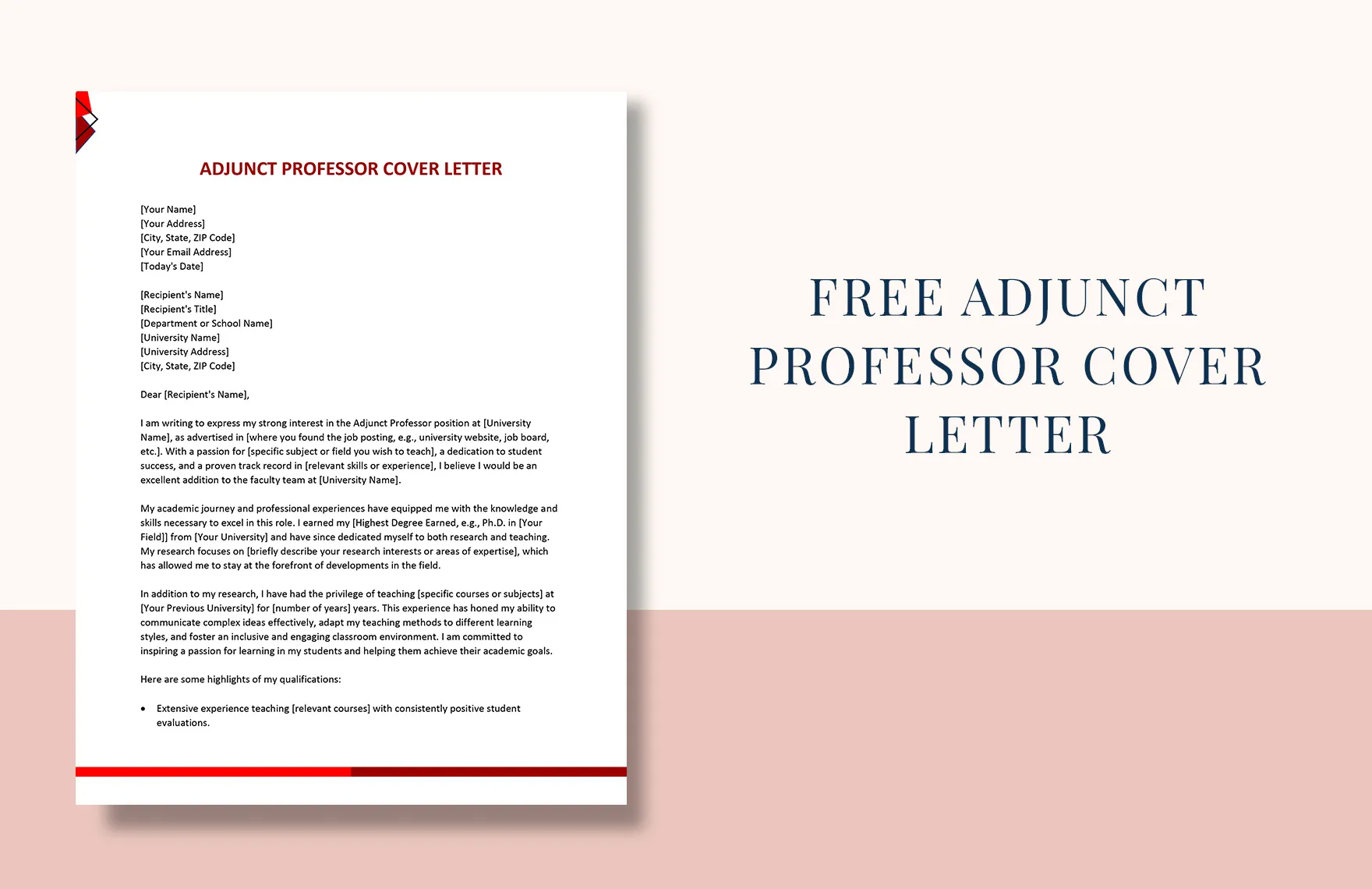
Consider sending a brief follow-up email a week or two after submitting your application. Thank the hiring manager for their time and reiterate your interest in the position. If there is a specific date by which they plan to make their decision, you can ask if they are still on schedule. This demonstrates your continued interest and helps you stay top-of-mind. A polite follow-up can sometimes make a difference.
